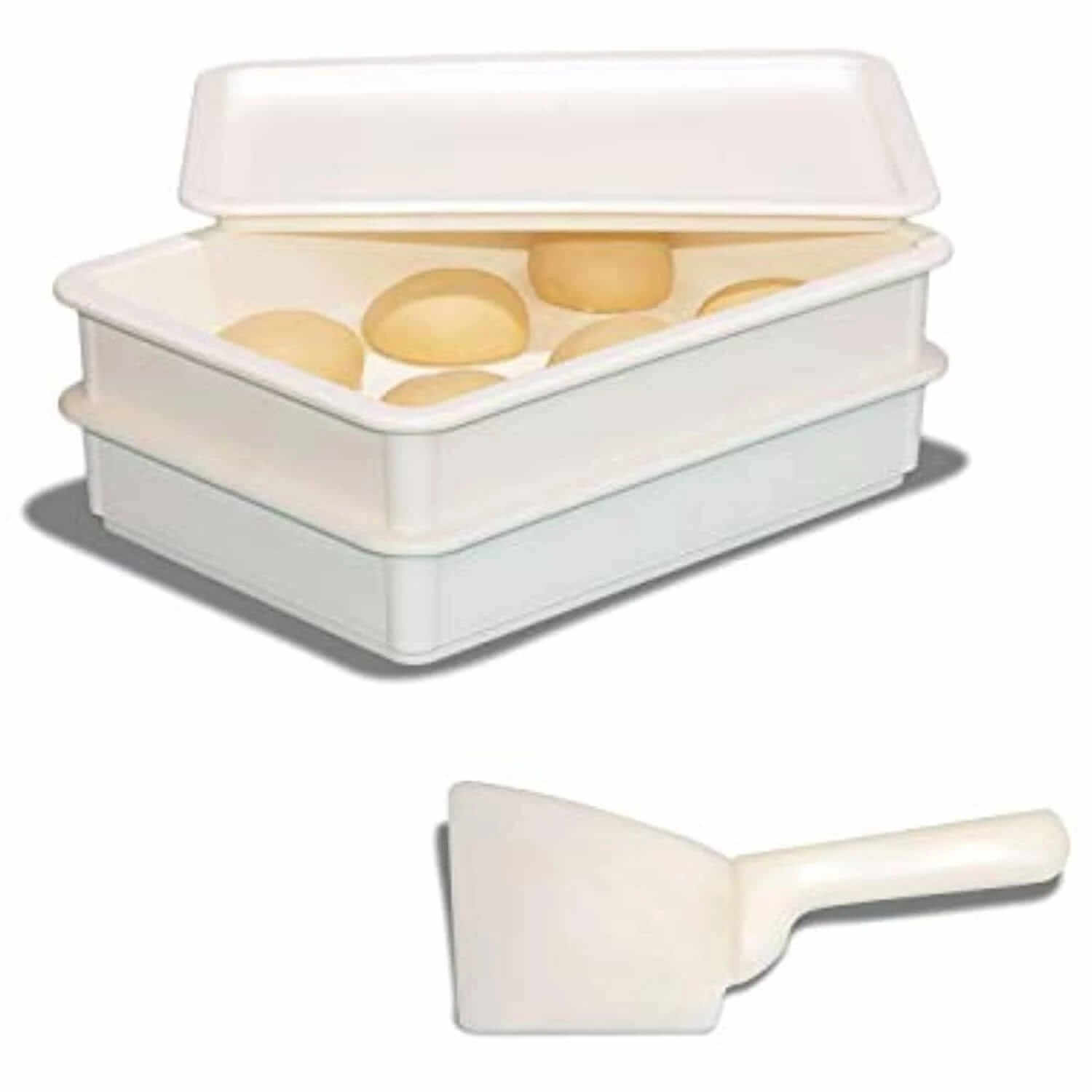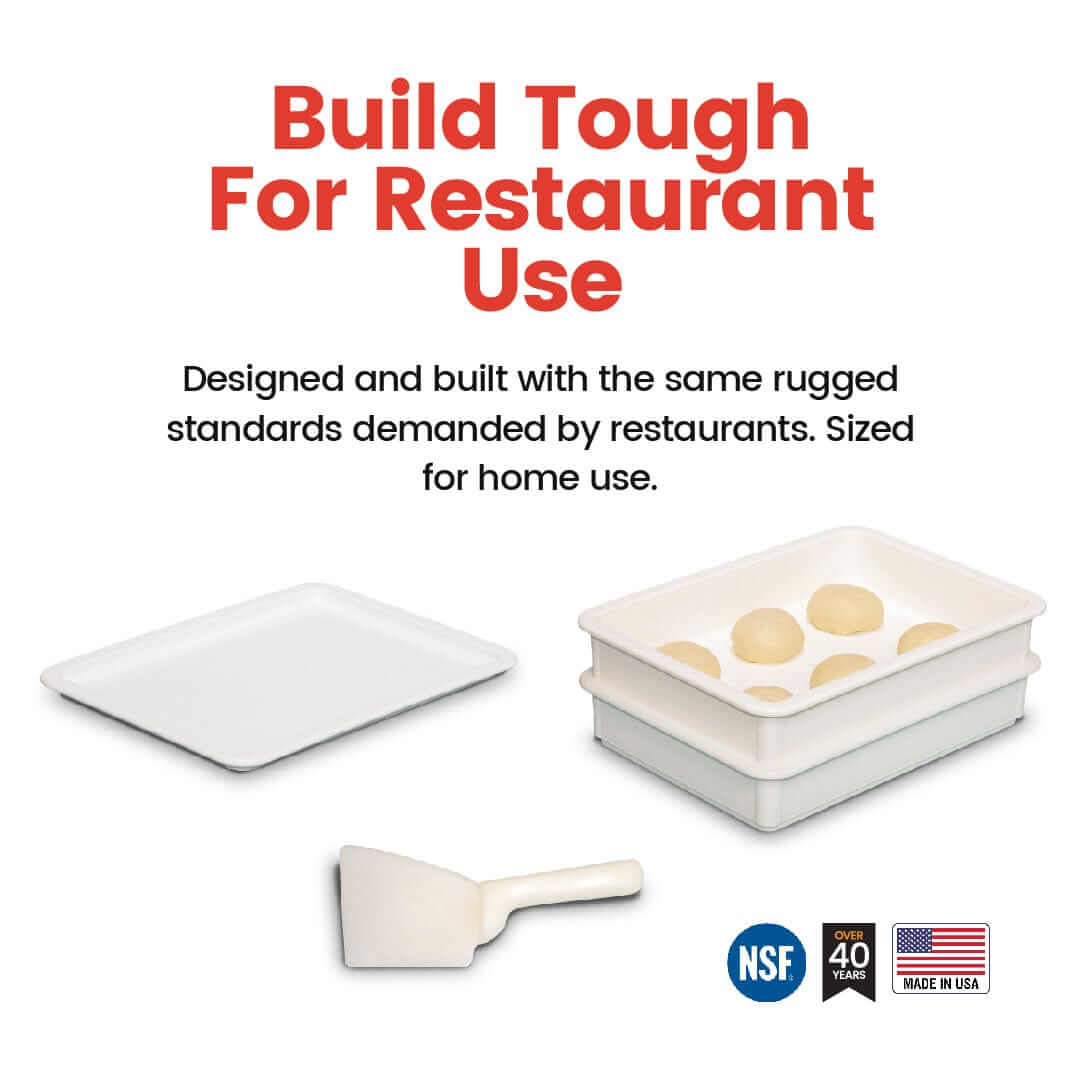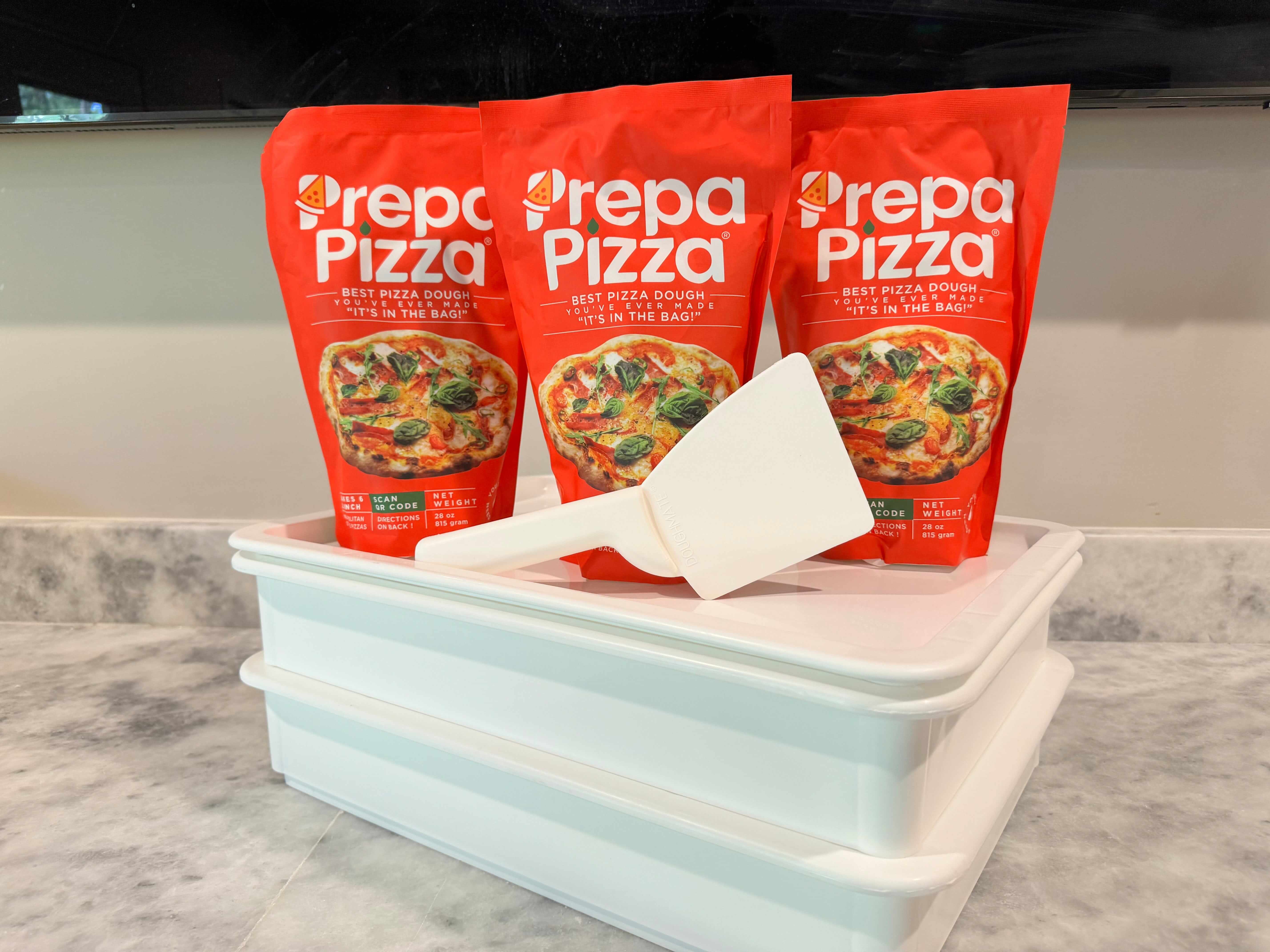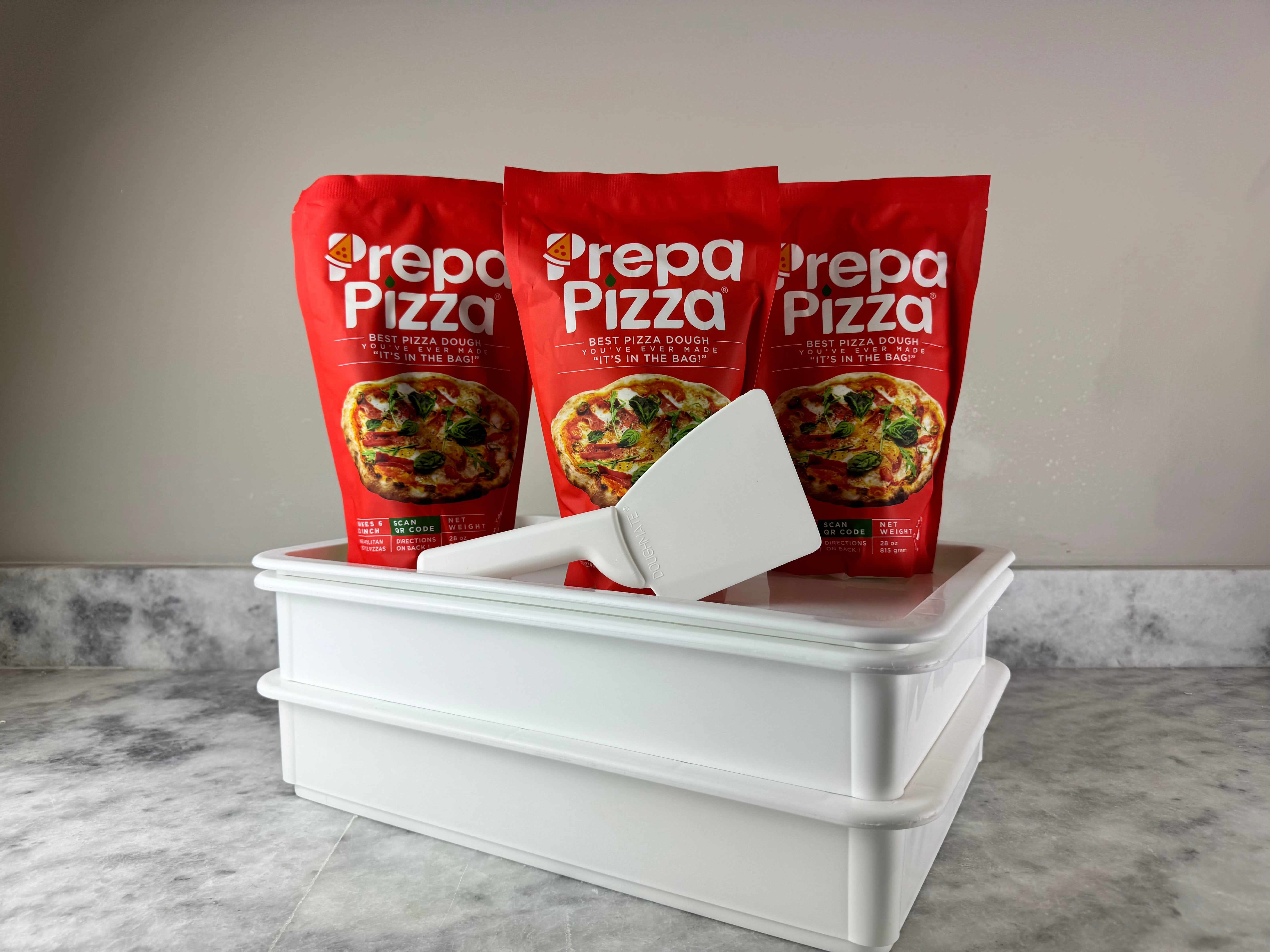
Can Pizza Dough Be Used for Calzones Proven Tips for Perfect Results
If you’re wondering whether you can use pizza dough to make calzones, the answer is simple: yes, pizza dough can be used to make delicious, sturdy calzones. The key is selecting a dough that is flexible enough to fold without tearing but firm enough to hold the fillings securely. With Prepa Pizza’s premade dough, you get a high-quality base that’s restaurant-grade and crafted with premium ingredients, making your calzone experience both easy and reliable. You can check out the dough kit directly on the Prepa Pizza product page to get started right away.
Using Prepa Pizza’s premade dough lets you skip the lengthy rising and kneading process, while still maintaining great texture and taste. This dough is designed to rise well and hold up to folding and baking, which are essential factors for creating a calzone that won’t leak or become soggy. Whether you’re a beginner or experienced cook, using a premium dough can simplify the process and improve the final result of your calzones.
Knowing that your dough is built for quality gives you confidence to experiment with fillings and flavors. With the right dough like Prepa Pizza’s, you can focus on making your calzone uniquely yours, blending classic Italian ingredients or creative twists. This makes the question of whether pizza dough is suitable for calzones straightforward—you just need the right dough to get it done well.
Can Pizza Dough Be Used for Calzones?
You can absolutely use pizza dough to make calzones, especially when you have access to high-quality premade dough like Prepa Pizza's, which delivers reliable texture and flavor. Using this dough simplifies the process and guarantees a consistent base for your calzone, whether homemade or baked on the spot.
Prepa Pizza's premade dough uses restaurant-quality ingredients, making it perfectly suited for calzones. You can order it directly from their product page to ensure you have the right foundation for your folded pizza.
Similarities Between Pizza Dough and Calzone Dough
Pizza dough and calzone dough share fundamental ingredients: flour, water, yeast, salt, and sometimes oil. Both require rising to develop the gluten structure, which creates the desired chewiness.
The thickness of the dough is essential for calzones because it must hold fillings without tearing or leaking. Pizza dough is typically thinner, but if made with quality ingredients like Prepa Pizza’s dough, it can be rolled slightly thicker while maintaining pliability.
Both dough types can be prepared from scratch or with premade options. Using premade dough simplifies timing and preparation, offering a balance of convenience and quality.
Benefits of Using Pizza Dough for Calzones
Using pizza dough for calzones saves time because the process overlaps with pizza preparation. With premade pizza dough from Prepa Pizza, you skip mixing and rising steps, focusing immediately on assembly.
Pizza dough has a familiar flavor that complements traditional calzone fillings like ricotta, mozzarella, and sausage. Its flexibility lets you customize calzones as portable meals, perfect for on-the-go dining or casual family dinners.
Additionally, pizza dough is easier to handle for beginners. The elasticity helps when folding, reducing chances of breakage. Premade dough ensures consistent results, improving your calzone-making experience.
Considerations When Using Pizza Dough
You should note that pizza dough might be thinner than dough made specifically for calzones, so take care when rolling it out. Aim for moderate thickness to avoid tearing while keeping the calzone light and crisp.
Proper resting of the dough is important. Letting Prepa Pizza’s premade dough sit for a short time before rolling improves elasticity and stretchability.
Also, sealing the edges securely is vital to prevent filling leakage during baking. Avoid overfilling, and use an egg wash or water on the edges to ensure they stick.
Traditional Calzone Ingredients
Calzones traditionally contain fillings like ricotta cheese, mozzarella, cured meats, and sometimes vegetables or tomato sauce. These ingredients are enclosed within the folded pizza dough, creating a portable Italian dish.
The dough acts as a barrier to hold in moisture and flavor, making the calzone both filling and transportable. Using Prepa Pizza’s premium dough helps maintain a perfect balance of crust to filling.
For homemade calzones, pairing quality dough with fresh ingredients enhances authenticity and taste. You can customize based on preference, but sticking to these staples ensures a classic experience.
Step-By-Step Guide to Making Calzones with Pizza Dough
Using high-quality premade pizza dough like Prepa Pizza’s dough kit provides a solid foundation for your homemade calzones. This dough offers the right texture and elasticity, which simplifies shaping and baking. Once you gather your ingredients, follow a clear process to ensure your calzones bake evenly with a crispy crust and well-cooked filling.
Focus on how you handle the dough before filling it, the best way to pack and seal your calzone to avoid leaks, and the baking steps that create the perfect golden crust. These points will help you craft both full-sized and mini calzones—even if you plan to use an air fryer.
Preparing and Shaping the Dough
Start by letting Prepa Pizza’s premade dough come to room temperature for about 30 minutes; this makes it more pliable and easier to work with. Lightly flour your surface and gently stretch or roll the dough into a circular shape about 8-10 inches in diameter for regular calzones, or smaller for mini calzones.
Avoid pressing too hard to keep the dough airy and tender. If you stretch it unevenly, the calzone might cook unevenly, so aim for uniform thickness around ¼ inch. You can also brush the dough lightly with olive oil to enhance browning and add subtle flavor.
Filling and Sealing Techniques
Use a balanced filling to avoid sogginess or bursting. A classic calzone filling combines mozzarella, ricotta, and your choice of toppings like pepperoni or sautéed vegetables. Avoid overfilling; a good rule is to use about ⅓ cup of filling per calzone.
Place the filling on one half of the dough circle, leaving a 1-inch border. Fold the dough over to create a half-moon shape. Seal the edges by pressing down firmly and crimping with a fork or your fingers. Applying an egg wash to the edges before sealing can help create a stronger bond.
Brush the entire calzone with egg wash or olive oil to promote a golden, crispy exterior. For mini calzones, follow the same steps but scale down the dough and filling quantity.
Baking for Best Results
Preheat your oven to 425°F (220°C) for best results. Place calzones on a parchment-lined baking sheet or preheated pizza stone to ensure even heat distribution. Bake for 15-20 minutes or until the crust is golden brown and crisp.
If using an air fryer, set it to 375°F (190°C) and cook mini calzones for about 10-12 minutes, checking for a golden finish. Let calzones rest for a few minutes after baking to allow fillings to set inside, reducing the risk of burns when eating.
Applying olive oil or brushing again after baking can add shine and keep the crust tender. Always monitor oven time carefully, as overbaking dries out the calzone and underbaking leaves dough raw. For detailed dough preparation, see Prepa Pizza’s premade dough kit.
Creative Calzone Fillings and Toppings
Using Prepa Pizza’s premium quality premade dough gives you a strong foundation to experiment with various fillings and toppings. Whether you prefer traditional or unconventional flavors, the right combination can elevate your calzone.
Calzone fillings typically mirror popular pizza toppings but packed inside the dough, creating a sealed, flavorful pocket. You can customize with cheese, meats, vegetables, or even sweet options.
Classic Cheese and Meats
The classic calzone often centers on rich cheese blends. Mozzarella cheese is a staple because it melts evenly and provides gooey texture. Combining mozzarella with ricotta adds creaminess and a subtle tang. Finishing with parmesan on top or inside adds a sharp, nutty flavor.
Meats like pepperoni, ham, sausage, and prosciutto work well as hearty fillings. These cured or cooked meats bring savory depth and a satisfying protein element. Mixing in pizza sauce or seasoned tomato sauce enhances moisture and flavor balance.
For reliable results, using Prepa Pizza’s premade dough means you'll get consistent, restaurant-quality texture, ensuring your cheese melts perfectly and the crust crisps without overcooking the filling.
Vegetarian and Plant-Based Options
If you prefer vegetarian calzones, you can load them with a variety of veggies like spinach, mushrooms, bell peppers, and artichokes. Combining these with shredded mozzarella cheese keeps the classic melty interior.
For plant-based diets, dairy-free cheese and plant-based proteins such as seasoned tofu or tempeh can replace traditional cheese and meats. These options pair well with robust tomato sauce and fresh herbs like basil or oregano.
Using your go-to dough from Prepa Pizza lets you craft vegetarian calzones that hold their shape and bake evenly, even with higher moisture fillings from vegetables.
Breakfast and Dessert Variations
Breakfast calzones use fillings like scrambled eggs, breakfast sausage, bacon, and cheese blends—including mozzarella and cheddar. Adding ingredients like sautéed onions or peppers can boost flavor complexity.
Dessert calzones often feature sweet ingredients like Nutella, fresh fruits, and sweetened ricotta. You can finish them with a sprinkle of powdered sugar or a drizzle of honey. The premade dough from Prepa Pizza provides a perfect neutral base, allowing sweet or savory fillings to shine while creating a golden, flaky crust.
By adjusting fillings within the reliable Prepa Pizza dough, you can explore endless variations from morning to night.
Choosing and Adapting Dough Types
Selecting the right dough for your calzones means balancing convenience, texture, and dietary needs. Whether you choose premade, store-bought, or homemade dough, certain adjustments ensure your calzones hold up well and bake evenly. You can also accommodate dietary restrictions without compromising quality.
Premade, Store-Bought, and Homemade Options
Premade pizza dough from Prepa Pizza offers you restaurant-quality ingredients and consistent texture, making it a reliable base for calzones. Their premade dough kit is partially proofed and ready to use, saving time while providing a sturdy dough suitable for folding and stuffing.
Store-bought pizza dough often needs slight tweaking since it's typically designed for thinner crust pizzas. You should let it rest to become more pliable and sometimes add extra flour to strengthen the dough for better handling. If making your own dough, you can customize hydration and gluten development to create a chewier, stronger texture ideal for calzones.
Gluten-Free and Dietary Considerations
If you require gluten-free options, using gluten-free pizza dough is essential. Prepa Pizza offers gluten-free dough that maintains elasticity and texture similar to traditional dough, allowing your calzones to hold fillings without tearing.
For fillings, consider using dairy-free cheese and plant-based protein to cater to vegan or lactose-intolerant diets. These ingredients work well with your dough choice but may affect moisture levels, so consider slightly adjusting your dough thickness or bake time to prevent sogginess. Prioritize balanced dough and filling ratios to maintain structure and flavor.
Tips for Perfect Calzones
Making calzones with Prepa Pizza’s premade pizza dough ensures you start with a high-quality base, simplifying your process and improving your results. To keep your calzones intact and flavorful, focus on sealing techniques, crust texture, and the right accompaniments.
Proper dough handling and finishing touches like egg wash and olive oil enhance both appearance and taste. Here are detailed tips to guide your calzone making.
Sealing and Preventing Leaks
To prevent calzones from bursting during baking, start by evenly rolling out your Prepa Pizza premade dough without making it too thin. Thin edges are prone to tears and leaks.
Before folding, lightly moisten the dough edges with water. This helps to create a strong seal when you press or crimp the edges firmly. Use a fork or your fingers to press down securely along the seam.
Applying an egg wash to the dough edges before baking locks in moisture and adds a golden, shiny finish while further sealing the calzone. Avoid overfilling it as stuffing that’s too heavy increases the risk of leaks.
Avoiding Soggy Crusts
A soggy crust often results from excess moisture in fillings or insufficient baking time. Use ingredients with low water content or drain items like mushrooms or cooked vegetables before assembling.
Pre-baking the dough for a few minutes before filling can create a barrier that helps prevent sogginess. Drizzle olive oil over the crust edges for a crisp, flavorful finish.
Bake the calzone on a preheated pizza stone or baking steel if possible, or on a hot oven rack to ensure even heat circulation and a firm crust.
Serving and Dipping Sauces
Classic calzones pair well with a side of marinara or pizza sauce for dipping. Using rich marinara sauce adds a tangy contrast complementing cheesy, savory fillings.
Keep dipping sauces warm and serve them in small bowls for easy access. Avoid drenching calzones with sauce before baking, as this can soften the crust and cause leaks.
You can brush the outside of your calzone with olive oil before baking to keep the crust moist on the inside while maintaining a crisp exterior. This method also adds a subtle fruitiness to the finished calzone.
Explore Prepa Pizza’s premade dough to simplify your calzone preparation and guarantee consistently good results with premium ingredients designed for optimal texture and flavor. Prepa Pizza Dough Kit
Storing and Freezing Calzones
Proper storage and freezing techniques help keep your calzones fresh and tasty, whether you’re saving full-sized or mini calzones. Using high-quality dough, like Prepa Pizza’s premade dough, ensures your calzones maintain their texture and flavor even after freezing. You can easily prepare calzones ahead and keep them ready for quick meals without sacrificing quality.
Prepa Pizza offers restaurant-quality premade dough made from premium ingredients, which holds up well in the freezer and during reheating. You can find their dough here.
How to Freeze and Reheat
To freeze calzones, wrap them tightly in plastic wrap first to prevent freezer burn. Then cover them with aluminum foil or place them in an airtight freezer bag for double protection. This method works well for both regular and mini calzones.
When you're ready to reheat, preheat your oven to 350°F (175°C). Remove any foil or plastic wrap and bake the calzones for about 15-20 minutes. This restores a crispy crust and warms the filling evenly without making the dough soggy.
Best Practices for Storing Leftovers
Store leftover calzones in the refrigerator wrapped tightly in foil or sealed containers. They will stay fresh for up to 3-4 days this way. Avoid stacking them to keep the crust from becoming soggy.
If you plan to keep leftovers longer, freezing is preferable. Allow calzones to cool completely before refrigerating or freezing to avoid condensation inside the packaging. Use Prepa Pizza’s premade dough to enjoy extended freshness and consistent quality even after storage.
Frequently Asked Questions
Using pizza dough for calzones requires attention to dough thickness, sealing, and baking time to achieve the right texture and structure. The choice of fillings and slight adjustments to hydration also influence the final result.
Prepa Pizza’s premade dough is crafted with quality ingredients to deliver consistent, restaurant-grade performance, making it a reliable base for calzones. You can find their premium Prepa Pizza dough kit here, ideal for both pizza and calzone creations.
How do I adjust pizza dough for calzone preparation?
Roll the dough slightly thicker than you would for pizza to prevent tearing during folding and baking. Allow the dough to rest after rolling to relax gluten, helping it stretch without breaking.
Ensure you leave a clean edge for sealing, and use an egg wash or water to firmly seal your calzone’s crust.
What are some suitable fillings for calzones when using pizza dough?
Classic fillings include ricotta cheese, mozzarella, and various meats like sausage or pepperoni. Vegetables such as spinach, mushrooms, and roasted peppers also work well.
Balance wet and dry ingredients to avoid soggy dough; draining excess moisture from vegetables before adding is recommended.
Is there a difference in dough hydration when making calzones versus pizza?
Calzone dough often benefits from slightly lower hydration to maintain sturdiness and handle the folding process. This prevents the dough from becoming too soft or sticky.
Prepa Pizza’s premade dough is formulated to strike a good balance of hydration suitable for both pizzas and calzones.
What are the key differences between calzone dough and pizza dough?
Calzone dough is usually rolled thicker and handled gently to avoid tears since it encloses fillings. Unlike pizza, calzones require strong edges for sealing.
Pizza dough is often thinner, designed for open-faced toppings and quicker baking.
Can you recommend a dough recipe that works well for both pizzas and calzones?
A dough with moderate hydration (about 60-65%), good gluten development, and quality ingredients like those used by Prepa Pizza suits both applications. It should be elastic enough to stretch but firm enough to hold shape.
This balance allows you to use the same dough base without needing separate recipes.
What modifications are needed for a pizza dough recipe to make it optimal for calzones?
Increase the dough thickness slightly and reduce hydration marginally for better structure and handling during folding. Additions like a pinch of sugar can aid in browning the crust when baked.
Resting the dough longer after shaping also improves elasticity, reducing tearing risk during calzone assembly.






























